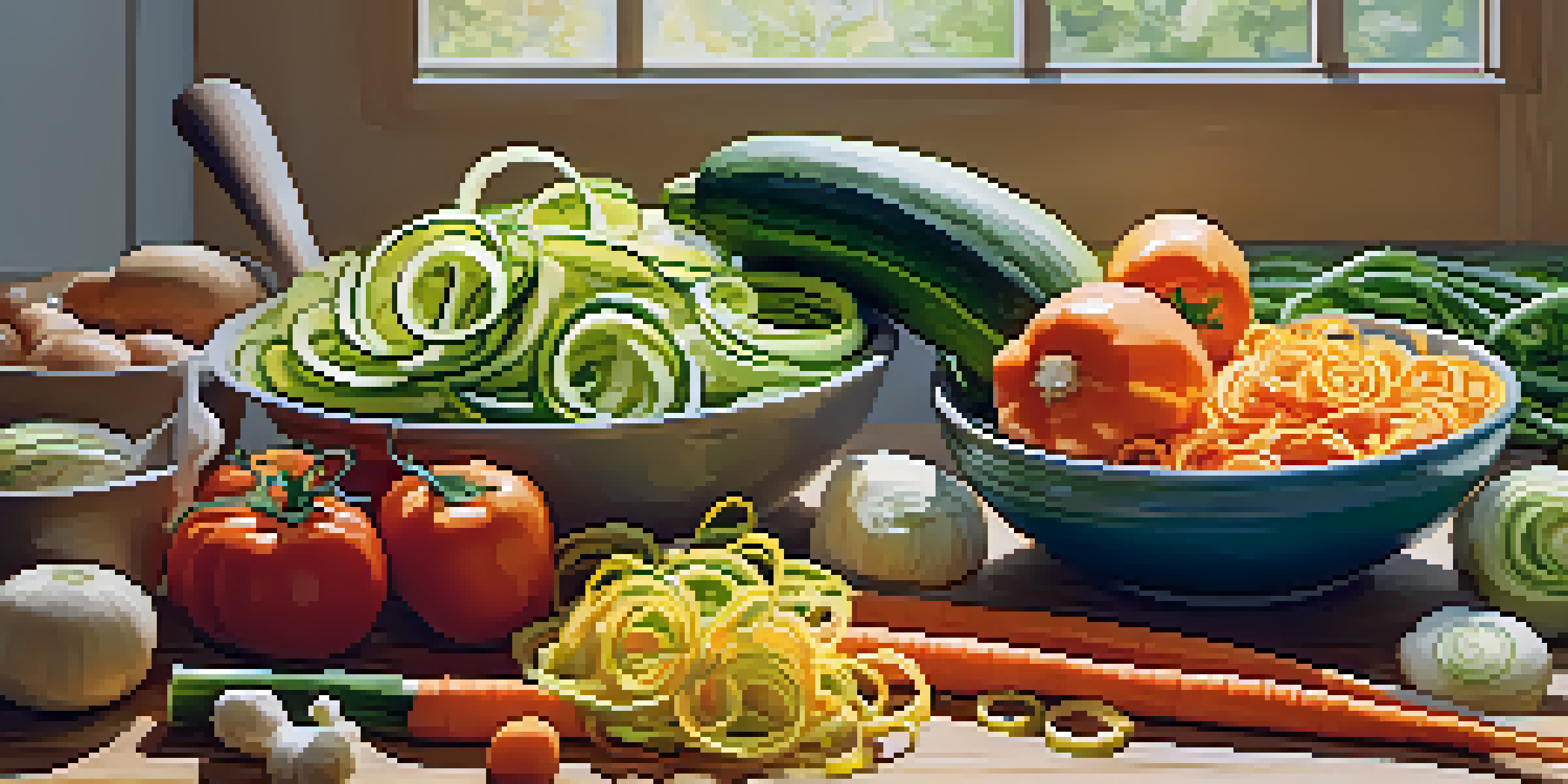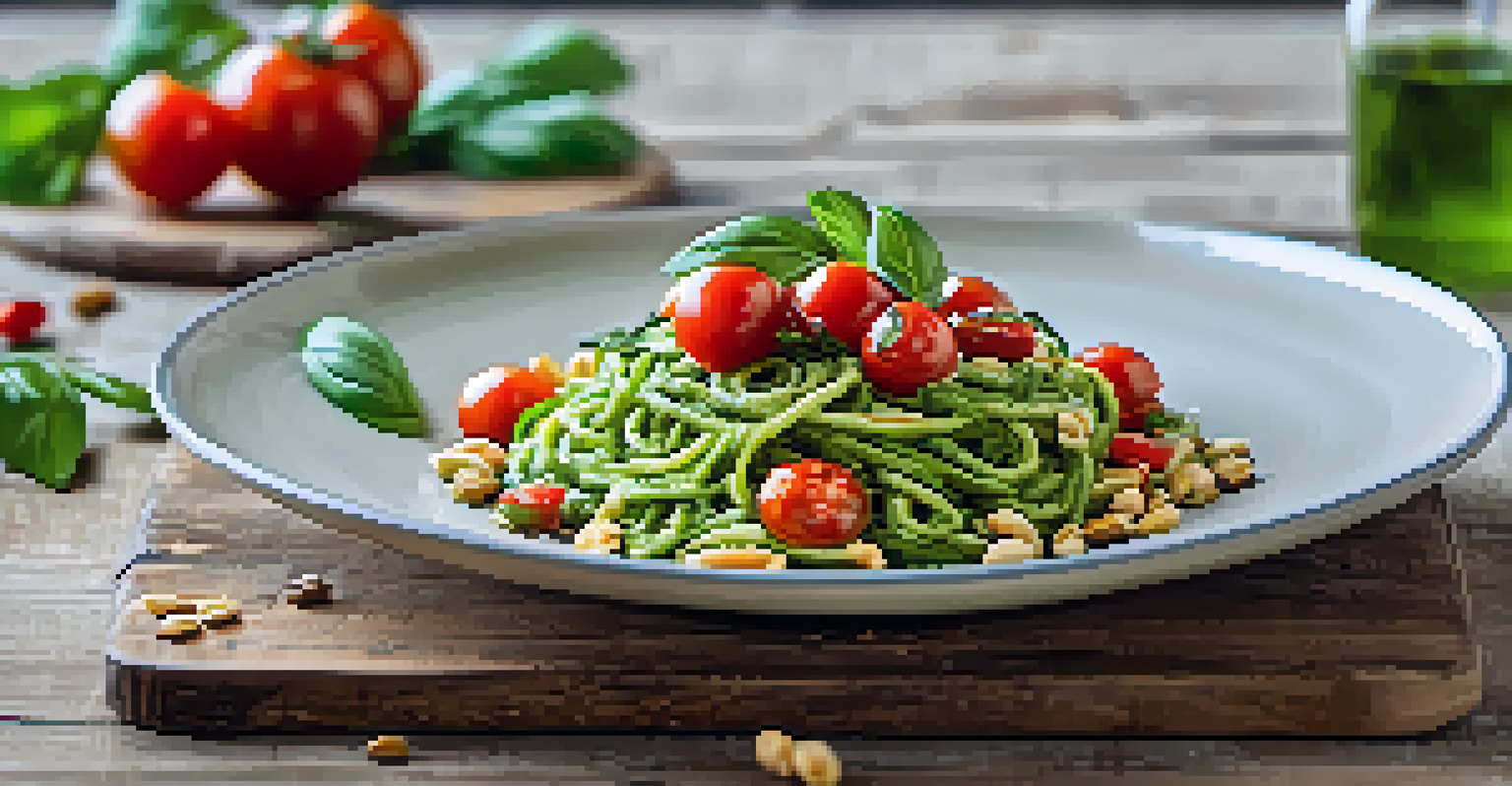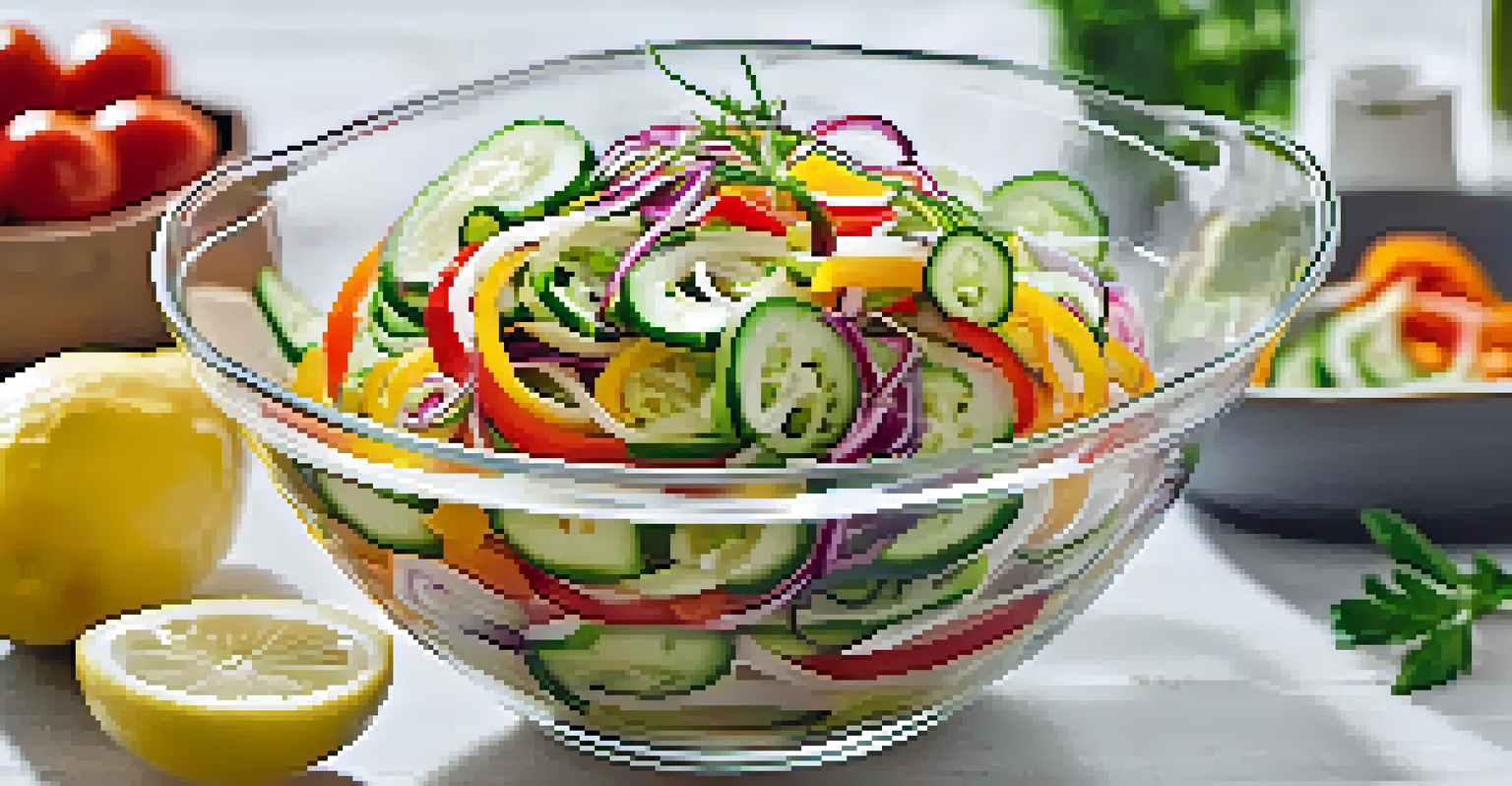Spiralizing: A Fun Method to Create Raw Veggie Noodles

What is Spiralizing and Why It Matters
Spiralizing is the art of transforming vegetables into noodle-like shapes, making them fun and appealing. Imagine turning a simple zucchini into a vibrant, curly noodle that can be enjoyed raw or cooked. This method not only enhances the presentation of your meals but also encourages healthier eating habits by substituting traditional pasta with nutrient-rich veggies.
You don’t have to cook fancy or complicated masterpieces—just good food from fresh ingredients.
The trend has gained popularity among health enthusiasts and foodies alike, as it adds a playful twist to salads, stir-fries, and even soups. Spiralized veggies are not only low in carbs but also packed with vitamins and minerals, making them a perfect choice for those looking to maintain a balanced diet. By incorporating spiralized vegetables into your meals, you can enjoy a diverse range of flavors and textures.
Moreover, spiralizing is a fun activity that can involve the whole family, turning meal prep into an enjoyable bonding experience. Whether you’re a seasoned chef or a kitchen novice, spiralizing can unlock new culinary possibilities while helping you to explore the vibrant world of vegetables.
The Best Vegetables for Spiralizing
When it comes to spiralizing, some vegetables work better than others. Zucchini and cucumbers are often the stars of the show, as they yield long, firm noodles that hold their shape well. Carrots, sweet potatoes, and beets also spiralize beautifully, adding a pop of color and sweetness to your dishes.

For those craving a bit more crunch, try spiralizing jicama or radishes. These vegetables not only add texture but also provide a refreshing bite to your meals. Think of them as the unexpected hero in your spiralized creations, bringing both flavor and nutrition to the table.
Spiralizing Makes Veggies Fun
Transforming vegetables into noodle shapes encourages healthier eating habits and adds a playful twist to meals.
Don't hesitate to experiment with other veggies too! The beauty of spiralizing lies in its versatility, allowing you to create unique combinations that suit your taste. The more you explore, the more you'll discover how different vegetables can elevate your dishes.
How to Spiralize: Tools and Techniques
To get started with spiralizing, you'll need the right tools. There are various spiralizers available, ranging from handheld devices to countertop gadgets that can handle larger quantities. If you’re just starting out, a simple handheld spiralizer can be an affordable and effective option.
Eating vegetables is a great way to stay healthy, and spiralizing them makes it fun and exciting.
Once you have your spiralizer, the technique is straightforward. Simply wash and trim your chosen vegetable, then secure it in the spiralizer and turn the handle or twist the vegetable to create your noodles. It’s as simple as that! Watching the vegetable transform before your eyes is part of the fun.
Remember to practice safety while spiralizing. Some vegetables may be tougher than others, so using a non-slip surface and keeping your fingers clear from the blades is essential. With a little practice, you’ll be a spiralizing pro in no time, ready to impress your friends and family with your culinary skills.
Delicious Spiralized Recipes to Try
Now that you know how to spiralize, it’s time to get cooking! One popular dish is zucchini noodles tossed in a fresh basil pesto. The creamy sauce clings perfectly to the noodles, creating a delightful balance of flavors. Top it off with cherry tomatoes and pine nuts for added texture and taste.
Another fantastic option is carrot noodles in a spicy peanut sauce. The sweetness of the carrots pairs wonderfully with the rich flavors of peanut butter, creating an irresistible dish that is both healthy and satisfying. Feel free to add your favorite proteins or other veggies to make it a complete meal.
Health Benefits of Spiralized Veggies
Spiralized vegetables are low in calories and high in nutrients, making them a great option for weight management and overall health.
For a refreshing twist, try a spiralized salad with cucumber and bell pepper dressed in a light vinaigrette. The crunchy textures and vibrant colors make it a feast for the eyes and the palate. Explore these recipes and let your creativity guide you as you create your own delicious spiralized meals.
Health Benefits of Eating Spiralized Veggies
Eating spiralized vegetables is not just a trendy choice; it comes with numerous health benefits as well. These nutrient-dense foods are typically lower in calories and carbohydrates compared to traditional pasta, making them an excellent option for those watching their weight or managing blood sugar levels. Plus, they are high in fiber, which promotes digestive health.
Incorporating more vegetables into your diet can also help increase your intake of essential vitamins and minerals. Spiralized veggies are often rich in antioxidants, which are known for their role in fighting inflammation and supporting overall health. Adding a variety of colors to your plate not only looks appealing but also ensures you’re getting a wide range of nutrients.
Additionally, spiralizing can make eating vegetables more enjoyable, especially for those who may be picky eaters. The fun shapes and textures can entice even the most reluctant veggie lovers to give them a try. By making vegetables exciting, spiralizing can help improve your overall dietary habits.
Tips for Storing and Preparing Spiralized Veggies
Once you’ve spiralized your veggies, it’s important to know how to store them properly. To keep them fresh, place your spiralized noodles in an airtight container and store them in the fridge. They can last for about 3-5 days, so you can prep ahead for quick meals throughout the week.
When it comes to preparing your spiralized veggies, remember that less is often more. Overcooking can lead to mushy noodles, so if you decide to cook them, aim for a quick sauté or steam to maintain their crunch. Many people enjoy eating spiralized veggies raw, which preserves their nutrients and adds a refreshing element to meals.
Easy Tips for Spiralizing Success
Proper storage and cooking techniques help maintain the freshness and crunch of spiralized veggies for delicious meals.
If you're planning to use spiralized veggies in a dish with sauce, consider lightly salting them beforehand. This can help draw out excess moisture and prevent a watery meal. With a few simple storage and preparation tips, you can enjoy the benefits of spiralized vegetables for days.
Conclusion: Embrace the Spiralizing Trend
Spiralizing is not just a cooking technique; it's a way to redefine how we view and enjoy vegetables. By transforming familiar veggies into fun, noodle-like shapes, you can elevate your meals and encourage healthier eating habits. Whether you’re a health enthusiast, a busy parent, or simply looking to add variety to your meals, spiralizing offers something for everyone.
As you experiment with different vegetables and recipes, you’ll discover the endless possibilities that spiralizing brings to your kitchen. It’s a creative outlet that allows you to be adventurous with your food, and who knows, you might even inspire others to join in on the fun! Sharing your spiralized creations can spark conversations and foster a love for healthy eating.

So grab your spiralizer, unleash your culinary creativity, and embrace the spiralizing trend. Your taste buds will thank you, and your body will too, as you indulge in the vibrant flavors and health benefits that come with every twist and turn.